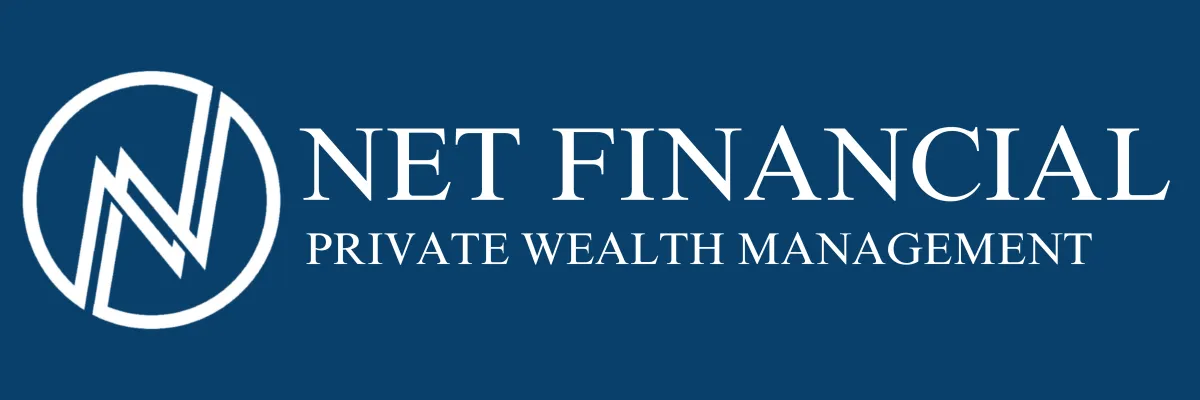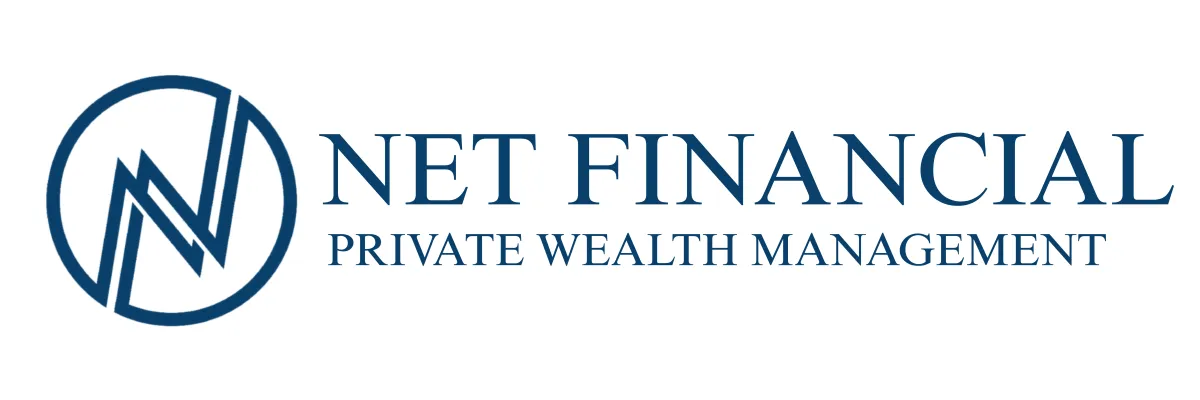401(k) Rollovers
Take Ownership of Your Financial Future

Why Consider a 401(k) Rollover?
While it may seem easier to leave your old 401(k) where it is, doing so can come at a cost. Keeping your retirement savings with a former employer could result in:
•Unnecessary fees that eat into your returns
•Limited investment options that may not align with goals
• Difficulty tracking multiple accounts over time
•Potential complications if your former employer shuts down
Transferring your old plan gives you more flexibility, greater investment choices, and opportunities to improve tax efficiency. Our team at Net Financial can help you explore your options and make a confident, informed decision about your retirement savings.

"Keeping retirement accounts with multiple former employers can lead to increased investment fees and make it harder to manage and rebalance your overall portfolio efficiently"
Rollover Options
Keep Your Previous Employer's Plan
If the plan allows, you may be able to keep your 401(k) in your previous employer’s retirement plan after you leave the company. Consider the following questions:
Are you eligible to leave your 401(k) in the plan?
•Is any paperwork required to initiate a transfer?
•Will you still be able to adjust your investment allocations?
Why someone might choose this option:
•The new employer’s plan may have a waiting period before you can enroll, and you plan to transfer your 401(k) later. •The current plan may have lower fees.
•The old plan’s investment choices may better align with your strategy.
Rolling Over Your 401(k) To A New Employer's Plan
If your new employer’s retirement plan allows rollovers, you may be able to transfer your old 401(k) into it. Before making a move, it’s important to evaluate the new plan carefully by considering:
•How the investment options, fees, and management costs compare between the two plans
•How long it may take to be eligible for a rollover into the new plan
•Any fees associated with the rollover process
•How account ownership works — in a qualified plan, you're a participant, not the owner, and the plan administrator controls how your funds can be transferred
Roll Into A Individual Retirment Account (IRA)
You have several ways to move your 401(k) through a direct rollover:
401(k) to Traditional IRA: Transfer your 401(k) into an existing IRA or open a new one. The process involves coordination with your former plan administrator, HR team, and a financial advisor to complete the necessary paperwork.
Roth 401(k) to Roth IRA: Move your Roth 401(k) into an existing or new Roth IRA without triggering taxes. Any recent earnings grow tax-deferred, and withdrawals are tax-free if the account has been open at least five years and you're age 59½ or older.
401(k) to Roth IRA (Conversion): If allowed, you can roll over your traditional 401(k) into a Roth IRA. This is a taxable event, so consult a tax advisor beforehand. Future earnings in the Roth IRA may be withdrawn tax-free once the five-year rule is met and you’re at least 59½.
What to evaluate before rolling over to an IRA or Roth IRA:
•Any fees or costs associated with the rollover process
•The investment options, expense ratios, and possible commissions in the new IRA account
Convert Into An Annuity For Future Income
An annuity is a financial contract with an insurance provider designed to deliver regular income during retirement—either for a set number of years or for the rest of your life. It's often used to reduce the risk of outliving your savings and can be funded through monthly contributions or a one-time payment, such as a 401(k) rollover.
There are three common types of annuities used in retirement planning: fixed, indexed, and variable. Each comes with its own benefits, drawbacks, and costs. As with any financial decision, it’s important to carefully evaluate the risks and understand the product before including an annuity in your retirement strategy.
Withdraw The Funds As A Cash Payout
Taking a full cash withdrawal from your 401(k) is considered a taxable event, regardless of your age. Before choosing this option, keep the following in mind:
•If you're under age 59½, a 10% early withdrawal penalty will apply.
•Income taxes are due immediately on both your contributions and any investment gains.
•The IRS allows penalty-free withdrawals after age 59½ and requires mandatory distributions (RMDs) starting at age 73 (increasing to 75 in 2033).
•Some exceptions may apply depending on your plan, so it’s important to speak with your plan administrator before taking action.
Think Twice Before Cashing Out
Tempted to use your 401(k) for a major purchase like a new home? It’s important to understand that cashing out comes with significant and often irreversible consequences.
Any amount you withdraw is treated as ordinary income
. For example, if you earn $50,000 annually and withdraw $100,000 from your retirement account, the IRS will treat it as if you made $150,000 that year—potentially pushing you into a much higher tax bracket.
To cover the anticipated taxes, most employers are required to withhold 20%
from your withdrawal upfront, meaning you'll receive far less than you expected while still facing a hefty tax bill later.
FAQS
How Long Does A Rollover Take?
The rollover process usually takes 2 to 4 weeks, depending on the procedures and responsiveness of your former employer’s retirement plan administrator.
What Stops A Rollover From Happening?
Although your personal contributions to your 401(k) belong to you, certain situations can delay a rollover. For example, employers can freeze your account during events like mergers, litigation, or plan administrator changes. In such cases, they must give at least 30 days' notice, but during the freeze, you may be unable to make contributions or withdrawals.
Another important factor is vesting. If your employer’s contributions are subject to a vesting schedule, you may not be entitled to the full balance. A 0% vested status means you can only access the funds you contributed. At 100% vested, all contributions—including those from your employer and any earnings—are fully yours. If you leave before becoming fully vested, you could forfeit part or all of the employer’s contributions.
Does A New Employer Have To Accept Rollovers?
In short, no—a new employer is not obligated to accept rollover contributions. Some plans may also place restrictions on the types of accounts they’ll accept rollovers from, such as only allowing transfers from other 401(k), 403(b), 457 plans, or IRAs. Always review your new plan’s rollover policy before making a decision.
Do I Have To Owe Taxes On My Rollover?
The rollover process—and the tax impact—depends on where and how you move your funds. That’s why it’s wise to consult a financial advisor before making any decisions. Here are the main rollover options:
•Direct Rollover
This is when your old 401(k) funds are transferred straight into your new employer’s plan or IRA. Because the money never passes through your hands, there are no taxes or penalties involved.
•Indirect Rollover
In this case, you receive a check for your 401(k) balance. You must redeposit it into a new account within 60 days or face a 10% early withdrawal penalty if you're under 59½, along with income tax on the amount. Additionally, your former employer will withhold 20% for taxes up front—so you’ll need to come up with that amount if you want to roll over the full balance.
•Traditional 401(k) to Traditional IRA
This is a tax-deferred rollover. Your money keeps growing without immediate tax consequences, and you won’t owe anything at the time of the transfer.
•Traditional 401(k) to Roth IRA (Conversion)
This rollover is taxable in the year you convert, but it may be a smart move if your current tax rate is low compared to what you expect in retirement. Future growth and withdrawals from the Roth IRA can be tax-free if qualified.
Get In Touch
Digitas Global, LLC dba Net Financial is a registered investment adviser with the Texas State Securities Board. Registration does not imply a certain level of skill or training. A copy of our current Form ADV Part 2A (Firm Brochure) discussing our advisory services, fees, and other important information is available upon request or at the SEC's investment adviser public information website www.adviserinfo.sec.gov. As a registered investment adviser, Digitas Global, LLC dba Net Financial has a fiduciary duty to act in the best interests of our clients at all times. Our fee structure is based on a percentage of assets under management. Detailed fee information is available in our Form ADV Part 2A. Past performance does not guarantee future results. All investments involve risk, including the potential loss of principal.
Net Financial may only transact business in those states in which it is registered, or qualifies for an exemption or exclusion from registration requirements. The information provided on this website is for general informational purposes only and should not be construed as personalized investment advice. Consult with a qualified financial advisor before making any investment decisions. Our firm has adopted a Code of Ethics to ensure we uphold our fiduciary duty to our clients. A copy is available upon request. Information about any disciplinary history for our firm can be found at the SEC's investment adviser public information website www.adviserinfo.sec.gov.
Contact Information:
Digitas Global, LLC dba Net Financial
24285 Katy Freeway, Suite 300, Katy, Texas 77494
Email: [email protected]
Phone: (346) 258-6100

